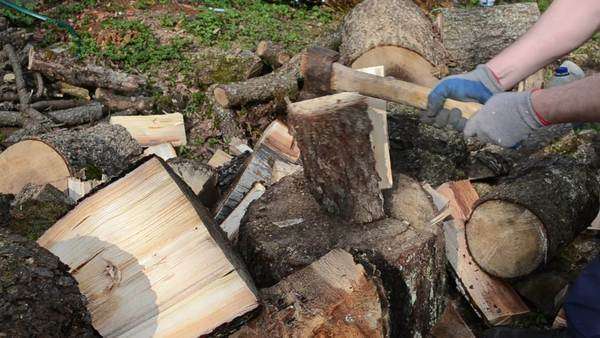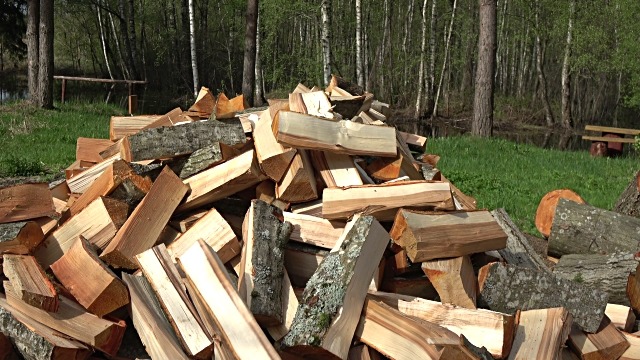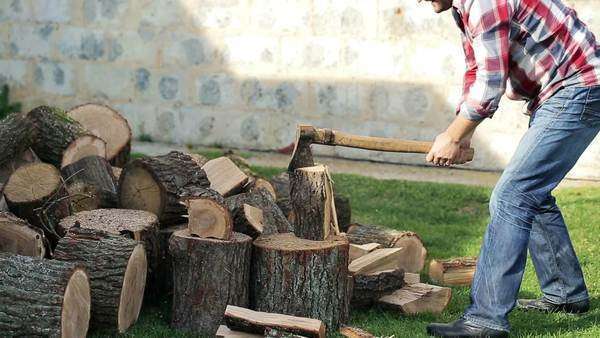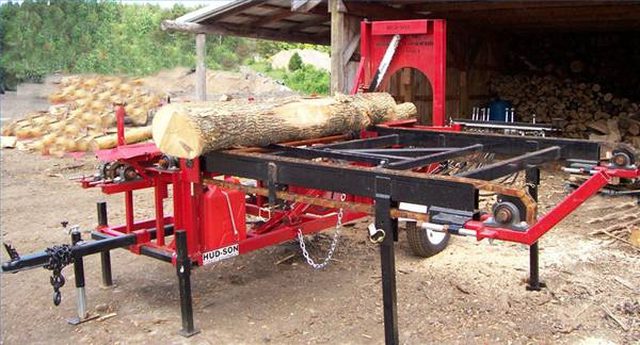
If you are going to do all the work to buy or cut firewood, split, and stack it, you should take the time to understand the basics of firewood storage so you can make the right choice for your home. Learn about the pros and cons of different species of wood, what seasoning means and why it is important, and how to properly store the wood to avoid rot and insects.
7 Tips and Everything about Firewood Storage
Firewood storage is of utmost importance to protect your investment and give you the most enjoyment. Let’s look at a few things that may help you make good choices.
1. Species of Wood to Consider
If you are answering an ad to buy firewood in your classifieds, don’t be afraid to ask questions before you hand over a check and load your truck. Take a minute to learn the basics of woods so you can make an educated decision when you choose which firewood you want to stock up on. Ask how long the wood has been seasoned. Buy quality wood to get quality results. Don’t settle for cut-up wood pallets or old wood of differing species that will burn and heat at different rates. Poplar, for instance, is relatively inexpensive, but you also don’t get much output in the heat department. Elm, on the other hand, is a hardwood and burns slow and hot. It costs a bit more, but a smaller amount may last the whole winter. Hickory is also a very hot-burning fuel and smells good in the bargain. Fir, too, smells nice (that typical holiday smell from your childhood), but it only puts out half the heat of hickory.

2. Round vs. Quartered – the Best Way to Prepare Firewood
Fresh-cut logs need to dry for around six months to allow them to light properly and burn completely. Seasoning logs for about six months reduces the moisture content by half. Leaving logs to season in their natural round state can more than double the drying time. The consensus is that splitting logs in half, or even quartering if possible, allows the wood to dry out properly, increases the flammable surface area, and creates rough, splintery edges that can catch fire more easily. Not only that, but it also makes it much easier to stack, and lighter weight to carry and handle.
3. How Is Firewood Measured?
You have probably heard the term “cord” associated with firewood. A cord measures out to 128 cubic feet, or 8’ x 4’ x 4.’ However with log size, airspace, and stacking anomalies, you may be looking at around 90 cubic feet of actual burnable wood. And though there is something so satisfying about gathering, stacking, and watching your firewood supply grow, try not to get carried away. Store what you think you will actually use. An oversupply can be hard to maintain and can cost enough to offset the savings of choosing it over electric heat. Trial and error can tell you soon enough how much wood to store, balanced against the cost, actual usage, and backbreaking effort.
4. Indoor Storage
Are there do’s and don’ts for how to store your firewood inside your home? Truth be told, storing your woodpile inside is not an ideal solution. Bugs and pollen can affect your family and take the pleasure out of sitting by the fireside. It is okay to bring logs into your home as long as you take a few precautions.
Make sure the wood is seasoned well and thoroughly dried, so it has no scent to attract bugs. (This will not affect it smelling great when you burn it.) When you are chopping your wood and splitting it, make sure to remove all of the bark. Bugs and beetles often hide in the bark of trees and can escape into your home. Bark is also prone to producing excess smoke when burning.
You will also need to make sure you choose wood that is free of sap, as it is a food source for bugs of all kinds and you will want to avoid inviting them to dinner in your home. It is acceptable to bring in enough wood for a fire or two and place in a sturdy bin, basket, or built-in near the fireplace. Avoid storing firewood in the kitchen to prevent bugs getting into your pantry.

5. Outdoor Storage
Since you have gone to all of the work and expense of getting a supply of firewood, take the time to plan and prepare a proper place to store it outdoors. You can do something as simple as stacking it all the same direction and covering it with a tarp. This is certainly one of the easiest methods, but not necessarily the best one. If you choose this option, make sure to tie the ends of the tarp down so it won’t blow away in the wind. Move the woodpile away from trees or overhangs from nearby structures that will drip on it in wet weather.
You can create a structure, essentially a pen, to stack the wood in. Build a framework on the ground and attach strong uprights every foot or so to prevent logs from escaping. In dry climates, there is no need for covering the pile, but where precipitation is prevalent, you will need to cover your woodpile with a tarp.
Building a small lean-to type structure, with the opening facing away from the weather is a better, though more expensive, option. The building can be custom-built to fit the amount of firewood you want to store. A 4’x4’x8’ shed will easily hold one full cord of wood – generally enough to last a season.
If you are storing your firewood in your garage, many problems can be eliminated. For one thing, it will be sitting on concrete, so there is no need for building a raised platform to keep it from getting wet. Insects are also less likely to take up residence in the garage. (No guarantee you won’t get a spider or two.)
If you are setting up your woodpile outdoors, however, storing your wood supply off the ground is critical, for two reasons. The first is to prevent insect infestations. The second is to prevent damp conditions that may cause damage to the wood, or prevent it from burning properly and ruin your plans for roasting marshmallows.

6. Avoiding Termites and Carpenter Ants
Nothing bugs you more than gathering up an armload of firewood and seeing little critters scattering, or flying, out of the woodpile. After all of the work and expense you put into acquiring a supply of firewood, it is critical to take a few simple steps to assure that it can remain insect-free.
Do not treat the wood with pesticides for two important reasons. First, it is a waste of money, since the chemicals cannot penetrate far enough into the center to kill any termites that may be present. Second, if you go on to burn wood that has been treated with insecticides, the smoke and fumes can be a serious health hazard.
Start with wood that has not been infested and try to keep it that way. Termites live in and near the ground, so elevating your stash is essential. Build a base, preferably metal sheeting, raised 12” to 18” off the ground on cinder blocks. Termites don’t typically climb and can’t chew through metal, so using metal in the base will help repel the insects. For the same reason, it is also wise to use metal for the back and ends of the bin or for any uprights you install to hold the wood in place. Store the woodpile at least five feet away from the house to avoid any transfer of possible termites from the firewood to your home.

7. Protection From Weather
When firewood is wet, it can cause several problems. Mold and mildew can grow in firewood, just like it can grow in the wooden framework of your shower or other wood repeatedly exposed to water. Moldy firewood, when dried, can still be burned, but what you are exposed to while breathing in the smoke could make you ill.
A wet woodpile is not very helpful. Burning damp wood will cause a great deal of smoke, and also puts out about twice the creosote, which is like lining your chimney with kindling. If watching your home go up in flames is something you would like to avoid, make sure your wood is dry. Wet firewood won’t produce the flames you are looking for, either. So how should you store your firewood to keep it dry?
Discover The Fun of Firewood Supply
Start with dry logs. Ideally, you would split a supply of logs that have been thoroughly dried first, then stack and cover it before it has a chance to get wet again. In the event that you end up with a supply of green wood, it needs to be dried, since half the weight of green wood is water. Storing it tightly packed and covered while still green, can cause the very mold you are trying to avoid. Stack wood loosely, leaving space between logs for light and air to circulate and aid in the drying process. Following these guidelines should help you get the most value and enjoyment from your firewood supply.
Katy Willis is a writer, lifelong homesteader, and master herbalist, master gardener, and canine nutritionist. Katy is a preparedness expert and modern homesteader practicing everyday preparedness, sustainability, and a holistic lifestyle.
She knows how important it is to be prepared for whatever life throws at you, because you just never know what's coming. And preparedness helps you give your family the best chance to thrive in any situation.
Katy is passionate about living naturally, growing food, keeping livestock, foraging, and making and using herbal remedies. Katy is an experienced herbalist and a member of the CMA (Complementary Medical Association).
Her preparedness skills go beyond just being "ready", she's ready to survive the initial disaster, and thrive afterward, too. She grows 100% organic food on roughly 15 acres and raises goats, chickens, and ducks. She also lovingly tends her orchard, where she grows many different fruit trees. And, because she likes to know exactly what she's feeding her family, she's a seasoned from-scratch cook and gluten-free baker.
Katy teaches foraging and environmental education classes, too, including self-sufficient living, modern homesteading, seed saving, and organic vegetable gardening.
Katy helps others learn forgotten skills, including basic survival skills and self-reliance.
She's been published on sites such as MSN, Angi, Home Advisor, Family Handyman, Wealth of Geeks, Readers Digest, and more.
